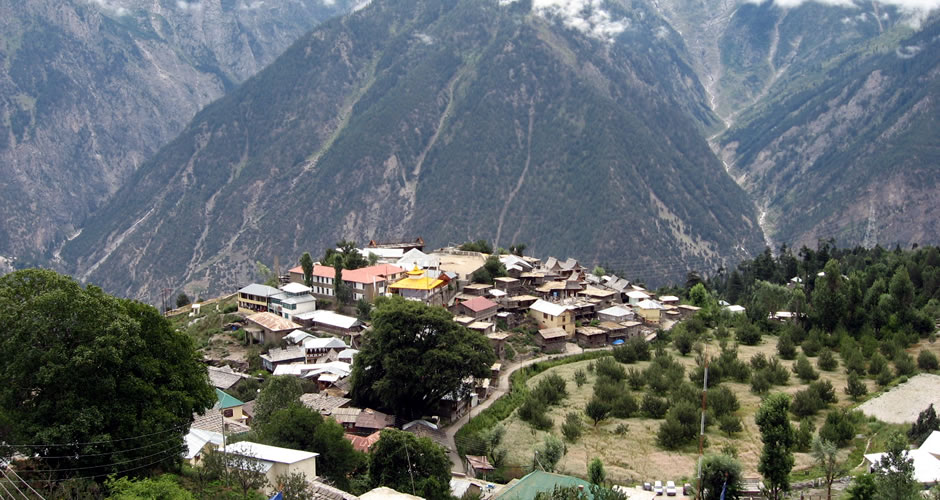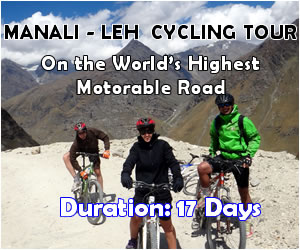Lahaul and Spiti Valley Jeep Safari

Duration: 9 Night/10 Day + 3 Days in Lahaul Valley (additional)
Best season: May to November
Region: Himachal Pradesh
The two twin Valleys Spiti and Lahaul in the north eastern corner of Himachal Pradesh are a region of nature at it wildest. The threshold of the Lahaul Plateau is nourished by the Chandra and Baga Rivers. Dry and very cold, it is surrounded by high mountains on all sides. There are many glaciers, the biggest is Bara Shigri. Lahaul is a fascinating area for Buddist art and culture. The monasteries of Lahaul and Spiti are rich repositories of ancient murals, thankas, wood carvings and golden images of the Padmasambhava. The people are charming, friendly and hospitable with their own traditional dances, ballads, folk tales and legends. The Valleys lie at a height of 2745 meters above sea level. Summers here are cool and pleasant with green grass, alpine flowers and an abundance of crops. There is no Monsoon, only sunshine and dry crisp air.
Day 1 Manali to Jhibi 104 km
Jhibi, a picturesque Village, gives you some time to relax and calm down.
Day 2 Jhibi to Saharan 123 km
Sarahan is a tiny, but beautiful Village in the Sutley Valley surrounded by apple orchards and dominated by the Shrikhand Mahadev Peak (5227m). It was the ancient capital of Rampur Bushehr, one of the biggest princely states in the Shimla hills. Here you can visit the Bhimakali Temple with its six silver coated doors. It is a mixture of both, Hindu and Buddhist style and attracts tourist from all over the world.
Day 3 Saharan to Chitkul 112 km
Today we enter the Sangla Valley, the most romantic and beautiful Valley in Kinnaur District. It is 95 km long and has green pasture land on either side of the River and the meadows close to the river are full of flowers and fruit trees. There are barren ranges of snow all year. Chitkul is the last inhabited Village in that Valley. Surrounded by green fields and high mountain Peaks it is like a fairy tale. Here you can see old quaint little houses, temples and gompas.
Day 4 Chitkul to Recong Peo to Kalpa 77 km
On the way back to the Sangla Valley you can make a stopover in Sangla. It is situated at an elevation of 2680 m. The Bering Nag Temple and the monastery are worth a visit. There is the famous fair Phulaich, which is celebrated each year in August-September. The wooden houses are a unique example of wooden architecture. One kilometer away is a Saffron farm. Recong Peo is the headquarter of Kinnaur district. It is one of the most scenic but less known districts. Here the river Sutley flows through and due to the high altitude the summer are short and the winter long. Due to the proximity to Tibet, the lifestyle and religion has been influenced by Buddhism, through the majority of the people practice Hinduism. Kinnour is a land of Legends and mythology. Kalpa, 51 km away from Sangla, is surrounded by vineyards, which are protected from bears by large sheep dogs, especially trained for that purpose. Here you can buy Kinnauri Shawls and caps.
Day 5 Kalpa to Nako 123 km
Nako, at an altitude of 3662 m in Hingrang Valley is the famous and largest village. Yaks, kine, horses and donkeys are reared here in abundance.
Day 6 Nako to Tabo 68 km
At the right side of Spiti River, is an ancient Village, flanked on either side by lofty hills, brown and sun burnt, it is the seat of one of the most famous monasteries: The 1000 year old Tabo Monastery. It has exquisite frescoes and stucco statues and is often called the Ajanta of the Himalayas.
Day 7 Tabo to Kaza 97 km via Dhankar and Kungri Monastery
Dhankar is the ancient capital of the Spiti king; the most incredibly Gompa is situated high on the barren rocky mountain slopes. Kungri Gompa, built around 1330 A.D., provides unmistakable evidence. Kaza is situated on the feet of steep ridges. It has a population of 781 and a traditional fair is celebrated every year in August. A short trail leads from Kaza to Hikim and to Langza Village situated in the Shila Valley.
Day 8 Kaza to Kibber/ Ki/ Comic back to Kaza 99km
Let’s visit the famous Kye gompa. The gompa is placed high on a mountain looking like a pyramid. It belongs to the Gelugpa sect of Tibetan Buddhism. Kibber, one of the highest permanent inhabited villages is located in a semi bowl-shape. A small Gompa is worth to visit, later we go to Kaza, the headquarter of Spiti Valley.
Day 9 Kaza to Chandratal to Batel 116 km
We drive through several villages of Spiti over the Kunzum pass, (4551 m). Our way leads us further to the beautiful Chandratal Lake at an altitude of 4270 meters. Chandratal, which means the Lake of Moon, is shaped like a half moon and is set on a large meadow of edelweiss within a lower ridge and the main Kunzum Range.
Day 10 Batel to Manali 110 km
Having a nice view of magnificent Himalayan Peaks, we drive through the Chandra valley, then uphill over the Rohtang Pass (3950mtrs), the gate way of Lahaul, Spiti and Kullu. In the afternoon we reach Manali.
Additional: Day 11 Batel to Keylong 98 km
Shashur (3km) monastery, perched upon a mountain-side, nearly 600 m above the valley, opposite Khardang. Gondla (18 km), on the right bank of the river Chandra, the tall imposing structure up on a hill is also a fortification. Kardang (5 km), the largest monastery in the area, it has barrel sized prayer drums that the monks turn during their perambulations, paintings, ancient weapons, musical instruments and large life-size statues of Buddha and the Bodhisattvas. Keylong is situated at an elevation of 3350m in the heart of the Himalayas in a lonely corner with high cliffs covered with snow. This place is lush green. Only here you can find a permanent Bazar. In Keylong, the head quarter of Lahoul and Spiti Valley, you can visit following attractions:
Day 12 Keylong to Trilokinath Temple to Udaipur 70 km
The Trilokinath Temple is sacred to both, Hindu and Buddhist. Udaipur is famous of the Mekula Devi temple. Since it is on a low altitude, apples, walnuts and apricots are growing here.
Day 13 Udaipur to Manali 151 km
Today we enter the Kullu Valley via Rohtang Pass (3980m) and reach in Manali. End of tour.

